4 ways of being sensitive
May 21, 2008

Sensitivity to surroundings. The Zelig syndrome
Several objects inspired by Zelig cover a table: from clocks to ashtrays, and the inevitable board games. (...) A woman in the kitchen wears an apron which bears the drawing of a chameleon with glasses and a legend which says: “Let’s change a little at dinner time”.
Helen Kane (singing):
“.... Chameleon times.
Everyone is thinking Chameleon”.
In the second scene, Susan Sontag in real time, the eighties, comments on the importance Leonard Zelig –Woody Allen– had in the twenties. A person who became famous for his wish to be loved, to please others. Leonard changed his personality and assumed the one of the person he was with.
When Doctor Fletcher –Mia Farrow– asks him about the reasons for his behaviour, he responds naively that he needs to be loved:
- Okay, now tell me why you take on the characteristics of the people you meet.
- It’s ... it’s to protect myself.
- What are you taking about? ... What do you mean by protecting yourself?
- Protecting oneself. Being... being the same as the others.
- Hum... You want... you want to feel protected.
- I want to be liked.
- Aha.
There are buildings that suffer from this syndrome. If everything next to them is covered in dust and stained with a single colour, they suffer the same discoloration as the surroundings, in order to please. Zelig is no more than the sublimation of the collective feeling of adapting to surroundings, of camouflaging oneself, of pleasing others in order to feel safer. The eagerness to please, to go unnoticed, involves a forced adaptation, a premature ageing, a journey through time, which transforms the original personality and stains it with the background colour.
Both of the buildings by the architects Annette Gigon and Mike Guyer, presented in this issue, suffer from the Zelig syndrome. Everything beside the tracks is covered with iron oxide dust. The Switching Box is stained with the same reddish colour and suffers the same discoloration as the surroundings, in order to please, to make its sharp-edged geometry friendlier. The eyes-windows of this chameleon building do not bulge like the eyes of that strange animal, but, being flush with the concrete, they are impregnated with the reddishgold colour produced by a metal sheet stuck to the glass. Gigon/Guyer considered it necessary for the artist Harald F. Müller (2) to take part in choosing that iron oxide ochre colour. His role was the same as the pigment cells of the chameleon: synchronisation and choice of the background colour. In these animals, colour changes are adjusted neurologically via the sense of sight. If their eyes are removed, they suffer problems adapting to the milieu, their skin loses the external references and their nervous system is not able to transmit the order required to synchronise with the background. M¸ller has done the same; he has been the nerve connection that has allowed the colour of all the objects found in that location to be transmitted to the building.
In the extension work to the Oskar Reinhart collection, the concrete cladding will soon become green. In this case, the little animal, glued like a suction pad to the old building, absorbs through its legs the colour of the copper salts that have appeared on the roof, and its melanophores synchronise the background colour. The concrete used for the walls of this gallery contains two additives: marble dust from the Jura and small particles of copper. In this project, the colours obtained with conventional types of concrete that were produced by the cement plant were not appropriate and the architects wanted to create their own palette, like an artist who rejects the commercial colours and likes to mix earths and materials to personalise his paintings. In this Gallery, the choice was made due to the fact that these are the two materials which the old existing building has been constructed with. The epidermal sensitivity, this forced ageing, this journey through time, transforms the personality of the original state of the new constructed volume and, in order to please, also appears with a skylight, with a similar arrangement to the one in the old gallery, in the same way as Zelig touches himself with an Indian feather when he stands next to a red-skin.
These two projects are conscious of the spirit of the place and their skin is like that of the chameleon, a sensitive agent that is going to modify its appearance and colour to be the same as the background. Architecture is not based on immutability, but counts on the fact that the walls will attain the required patina, more quickly than normal, catalysed by an architectural idea that, in a certain way, identifies with the natural phenomenon of the adaptation to the environment.
Sensitivity to the passing of time
New materials lack nature. The words that define them do not exist because they have been replaced by the initials of their components: PVC, PE, PP, EPDM or EPS, for: polyvinyl chloride, polyethylene, polypropylene, ethylene propylene dien monomer or expanded polystyrene.... These materials do not weigh in the memory, they have no meaning, or history and most of them age quickly. To prevent them from ageing, protective layers and sheets are often added that normally contain the words “long life” in their specifications. Their service life relates more to the claims period of insurance companies than to the time scale used in building. The ten-year liability period is just one instant in time compared with the unperturbability of Greek marbles.
But everything is a question of time, wear and the erosion this produces. In 1968, Giovanni Anselmo (3) in his work “No title. (Structure that eats)” delves into the issue of the precariousness and passage of time. He uses the following elements: two granite blocks, lettuce leaves and a pile of sand. A small granite block is wedged into another with the help of the vegetable element. When the lettuce dries after several days, it can no longer maintain the pressure between the stones and the small block falls onto the pile of sand. (As an alternative the lettuce can be replaced with a filet of meat; in some cases, the two blocks appear tied with copper wire, because the Gallery proprietor has got tired of the fact that one of the blocks is always falling). The dehydration of the organic material produces the physical phenomenon of the fall. The permanence of the stone is threatened by the decadence of living organisms, because this deterioration causes it to break up gradually when it falls. But the pile of sand (sawdust or organic waste in other references), represents the conversion of minerals by erosion, into the powdery state of the broken rock, in this transformation of physical appearances caused by time. Due to wear and friction, the rock is absorbed in the form of minerals by living beings and organisms that, when they die, are converted, in turn, into the inorganic matter that forms part of the
inanimate world.
This issue is scarcely taken into account in architecture. We cannot imagine closing a window on the inside with piece of board, in the fashion of a shutter that, instead of a traditional hinged fastening, had this kind of organic putty with lettuce leaves, or filet. This is the realm of the art world. But architecture can indeed recover the physical sensation produced by materials and how these change from one state to another as time passes: when you touch, dust may rub off the wall, modifying its flatness as it wears away; when you walk, notice how a groove is cut in the stone slabs where most people walk... All this with the added possibility that these sensations may be qualified and reinforced as time passes, appropriate for every season of the year and that in this way, it will be time that forms part of the palette of materials that architecture works with. Time, which makes objects change and undergo processes similar to that of the ageing of living beings.
Heat sensitivity
In contrast to lettuce and filets that contain substances that react quickly to atmospheric conditions, there is an alloy called Invar (4), discovered by the physicist Charles Guillaume in 1897, that is characterised by the just opposite, i.e., by its insensitivity. Its negligible thermal deformation is noteworthy. It would be the prototype of a product insensitive to temperature. Until a short time ago, its behaviour was considered to be magical. It consists of one part of nickel and two parts of iron, a metal that abandons its ferro-magnetic state when the temperature increases and converts to another state which takes up a smaller volume. With heat, this material keeps its poker face and organises its internal state in such a way that its magnetic spins change from an ordered state to another, disordered one, that takes up less volume and offsets the thermal expansion. This absence of sensitiveness provides Invar with very little artistic feeling and has caused it to be relegated to a series of technical applications. It is used in the precision mechanisms of watches to prevent them from being affected by the temperature of the wrist, in the masks of television screens with perforations that have to be inalterable so as to prevent the dots of colour from mixing, or in the welds of the large plates used to construct supertanker hulls, which must be free from thermal reactions that might lead to cracks. Invar totally lacks the concept that Beuys called Wärmecharakter or the “warm nature” of materials.
The work of Joseph Beuys, on the other hand, is impregnated with the smell and the stickiness provided by two materials that are very sensitive to temperature, i.e., fat and beeswax. The small range of temperatures in which fat and wax maintain their solid state, compared to the immutability of traditional materials used in sculptures, also attracted him. Fat and wax can adopt a variety of shapes in accordance with the temperature and have a suggestive potential that does not depend solely on the hands of the artist, but also on the atmospheric conditions of the space in which these are found. In an interview made by Bernard Lamarche- Vadel, he comments: “Fat was a great discovery for me, as it was a material that could appear very chaotic and indeterminate. I could influence it with heat or cold and I could transform it” (5).
Beuys always said that his attachment to animal fat came from the time when he was shot down in his Stuka, a JU 87, in the Second World War. He was picked up, half dead, by a group of Tartars in the Crimea, who, in order to heal his wounds, covered him in animal fat and wrapped him in their typical felt blankets. (According to Benjamin H. D. Buchloh (6), this has never been proven and belongs to the Beuysian legend; nevertheless, mythological adventures do not always require verification).
For Beuys, wax and fat were materials that allow one to reflect upon their essence before their shape. On taking the material into consideration first, Beuys was obliged to reveal the potential of the substances themselves, before thinking about giving shape to his ideas. A traditional classification of the favourite materials of Beuys consists of two columns; one of these lists fluids and the other, solids. Wax and fat pass from one list to the other continuously, as a simple temperature difference causes them to change their state. These two heat-sensitive materials help us to investigate the relationship between shape and movement. A temperature increase produces a movement that brings about a change in shape. But there is no doubt that temperature variations, heat and cold, represent the physical actions that come closest to the spiritual components of art.
Heat is a form of radiation, it is like the life breath of the artist who manipulates the material and moulds it according to his wishes.
Spiritual sensitivity
The photo with which Thomas Ruff interprets the Eberswalde library is moving. Two young people on a Vespa superimposed on an image of the constructed building. They are two young people ready to start a journey. Their luggage takes up more space than they do. It could be interpreted that they are two students of the School who are leaving to start their adventure in life with all their knowledge in a large sack. It may also be a symbol of the incorporation into the western world of the former German Democratic Republic, with the opening of its markets and the abandonment of its former way of life. Their vehicle is not exactly the latest model of car. Nor is it covered in glass beads like the motorcycles of the mods of the seventies, with that large number of mirrors that looked like antennas on the front. They look at the photographer impatiently. Their eyes seem to say: That’s the last one. We’re in a hurry! They seem to have just come back from a trip into the past, as the photo has the appearance of an old illuminated portrait but are in bit of a hurry to adapt quickly to the strange surroundings in which they have been placed. Their attitude is one of innocent arrogance. Innocent because of their mode of transport which is clearly insufficient for such an important journey and arrogant because of that impatient uneasiness in their eyes. But the most touching quality of the photo is that Thomas Ruff has joined their faces with the sensitive line of love. Their heads are superimposed in such a way that they coincide with the translucent band of Venus and Cupid that envelops the building.
In this photo, therefore, there are several superimposed images: the volume of the building, the motifs on its facade and the two young travellers, in a triple merging that inevitably feeds on itself. A multiple sensitisation that mixes architectural ideas with messages taken from outside the constructed world: the University as an educational institution, as the trainer of the citizens of the future and as the promoter of buildings containing knowledge; buildings as a support for images, that symbolise man facing up to the world, with the use of materials sensitive to time and history; history that bears the marks of time and time that is the matter with which history is built; the important concepts that are screen printed on the glass: love, the futility of life and the eagerness to obtain scientific know-how.
In concrete, time write history, as it is the retarding agent that provides different finishes with different setting times, depending upon the amount used to impregnate a sheet of paper stuck to the form-work panel. These are sensitive materials that go beyond the coloured glass that becomes opaque when electrical currents are passed through. In this way, the design of the Eberswalde library contains concepts and ideas that act like the light of an enlarger which falls upon photographic paper. These materials are spiritual and for this reason are highly sensitive, because no technique is required in order to understand them and work with them, but they need to be touched by a line which is both intangible and as subtle as the line that joins the bodies of Venus and Cupid and the gaze of the two young travellers.
Article publised in a+t 14. Sensitive materials (I)
Notes
(1) Zelig. Woody Allen. Tusquets Editores. Cuadernos Ínfimos 115. Barcelona 1984,1985 y 1988. Páginas 32-33
(2) The Switching Box. See on pages 46 to 51 of this issue and the Extension of the Oskar Reinhart Collection on pages 40 to 45
(3) L’arte povera. Didier Semin. Centre Georges Pompidou. París, 1992
(4) Nature, issue n. 400. Macmillan Publishers Ltd., 1999, pages 46 to 49
(5) Joseph Beuys: it is about a bicycle?. Bernard Lamarche-Vadel. París and Verona, 1985
(6) “Benjamin H. D. Buchloh pointed out to Rosalind Krauss that no one had ever checked
this point (the plane crash in Crimera) historically he methodically cast doubt on any episode in connection with Beuys and suspects him of having ‘deliberately planned’ his own legend”. Note on page 12 of the book Joseph Beuys. The Essential. Alain Borer. Thames and Hudson. London, 1996


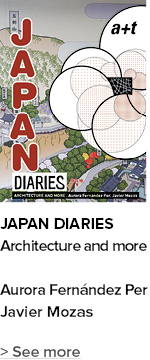




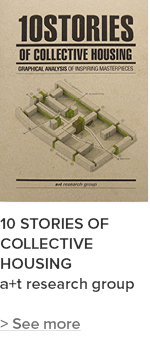

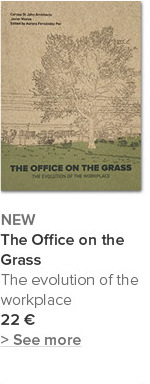

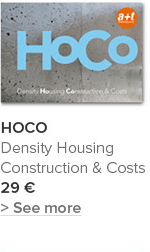

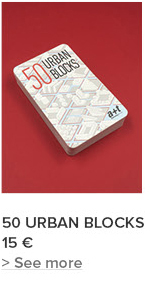
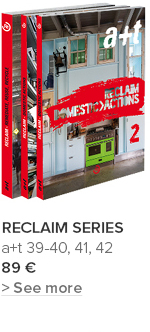

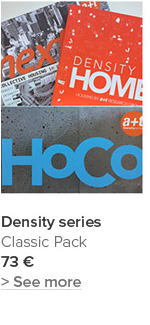





 I've read and agree to
I've read and agree to 


